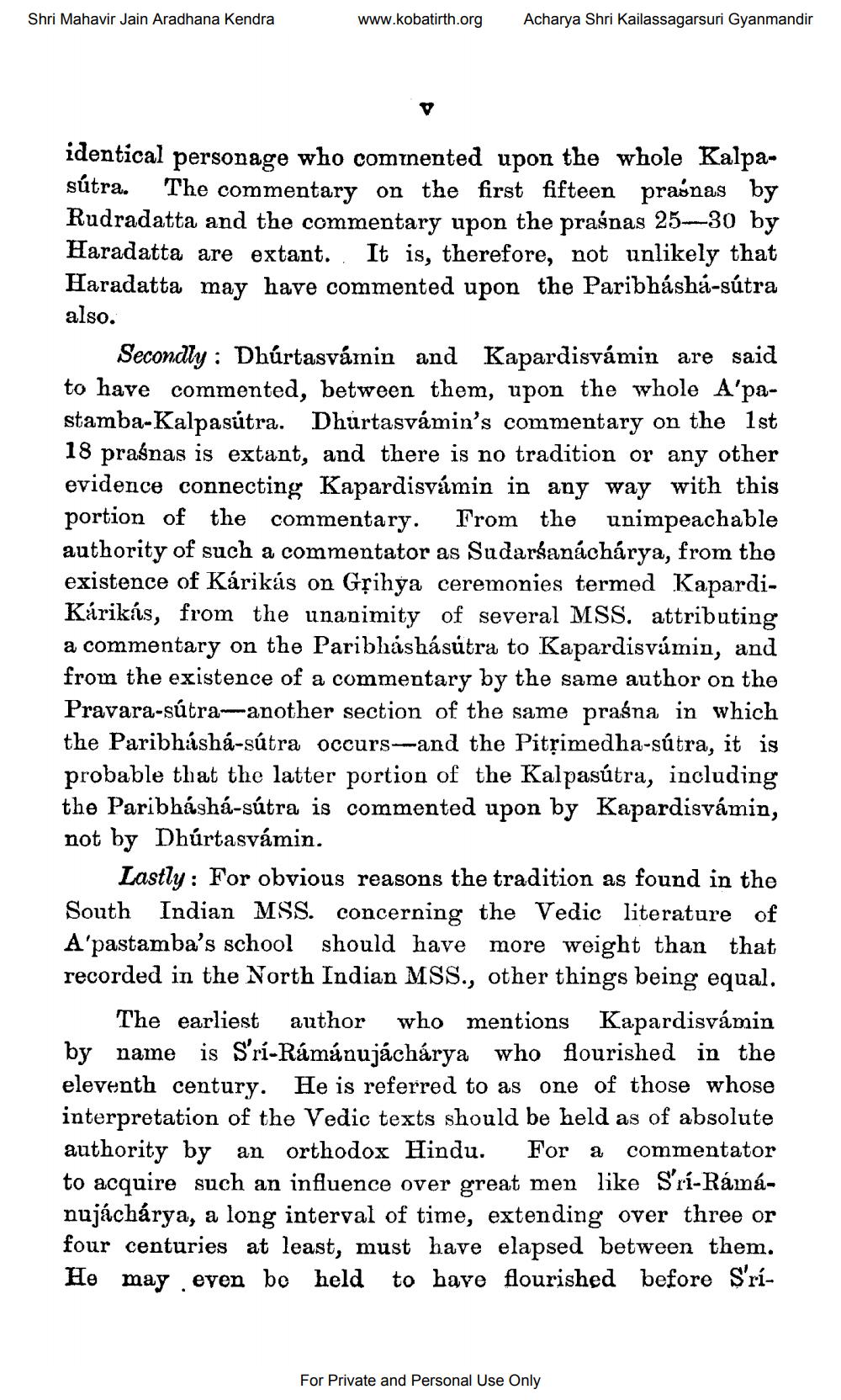________________
Shri Mahavir Jain Aradhana Kendra
www.kobatirth.org
Acharya Shri Kailassagarsuri Gyanmandir
identical personage who commented upon the whole Kalpasútra. The commentary on the first fifteen praónas by Rudradatta and the commentary upon the praśnas 25_-30 by Haradatta are extant. It is, therefore, not unlikely that Haradatta may have commented upon the Paribháshá-sútra also.
Secondly : Dhúrtasvárnin and Kapardisvámin are said to have commented, between them, upon the whole A'pastamba-Kalpasútra. Dhurtasvámin's commentary on the 1st 18 praśnas is extant, and there is no tradition or any other evidence connecting Kapardisvámin in any way with this portion of the commentary. From the unimpeachable authority of such a commentator as Sudarsanáchárya, from the existence of Kárikás on Gțihya ceremonies termed KapardiKárikás, from the unanimity of several MSS. attributing a commentary on the Paribháshásútra to Kapardisvámin, and from the existence of a commentary by the same author on the Pravara-sútraanother section of the same praśna in which the Paribháshá-sútra occurs--and the Pitrimedha-sútra, it is probable that the latter portion of the Kalpasútra, including the Paribháshá-sútra is commented upon by Kapardisvámin, not by Dhúrtasvámin.
Lastly: For obvious reasons the tradition as found in the South Indian MSS. concerning the Vedic literature of A'pastamba's school should have more weight than that recorded in the North Indian MSS., other things being equal.
The earliest author who mentions Kapardisvámin by name is S'rí-Rámánujáchárya who flourished in the eleventh century. He is referred to as one of those whose interpretation of the Vedic texts should be held as of absolute authority by an orthodox Hindu. For a commentator to acquire such an influence over great men like S'rí-Rámánujáchárya, a long interval of time, extending over three or four centuries at least, must have elapsed between them. He may even be held to have flourished before Sri
For Private and Personal Use Only




